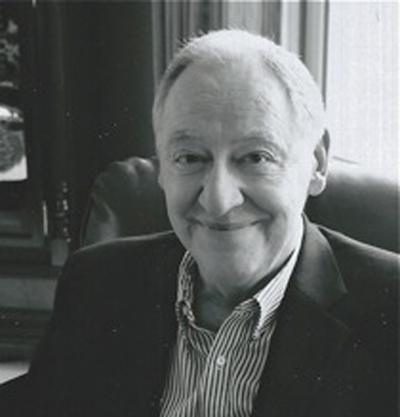At Large In Ballard: Brooklyn to Ballard
Wed, 02/12/2014
By Peggy Sturdivant
While many in Seattle were focused on what would become a historic moment first in a New York stadium on New Jersey soil and then in downtown Seattle there was another historic moment taking place. Janet Yellen was sworn in as the first woman to be Chair of the Board of Governors of the Federal Reserve. This interested me as a woman, as the daughter of an economist, but it actually came closest to home for me sitting across from Donald Kentop.
Like Yellen, Don Kentop was born and raised in Brooklyn. He graduated from Thomas Jefferson H.S. in 1952; Yellen graduated Valedictorian from Fort Hood H.S. in 1963. They were both educated in public high schools in Brooklyn, New York; neither of them at the legendary magnet Stuyvesant High School. Yellen couldn’t attend Stuyvesant because she was female.
Even before Yellen’s high school years Kentop was studying history at New York University. One day he happened to read a plaque on an academic building in Washington Square. That’s how he learned that NYU’s campus included the building formerly known as the Asch Building, the site of what was the deadliest fire in American labor history: The Triangle Shirtwaist Factory Fire of 1911.
Although the fire that led to the death of 147 workers, almost all young immigrant workers, mostly female, had been a scandal and a rallying cause for unions and worker safety in the early 1900s, it had been mostly forgotten by the late 50s, eclipsed by the sinking of the Titanic, the Stock Market Crash, and two World Wars. There were just three plaques. But with the 50th anniversary, just when Kentop had been recalled to the Army Reserves during the 1961 Berlin Crisis, the Triangle Shirtwaist Factory Fire regained its role in labor history, even as it continues to serve as grim counterpoint to ongoing conditions in factories overseas.
Kentop went on to live a full life, one that eventually brought his family to Seattle, and to Ballard. However the memory of that relatively inconspicuous plaque stayed with Kentop, from his years writing song lyrics for a friend’s music in Brooklyn, through the teaching degree he never used, the time in the Army, his marriage to a Canadian nurse he met at Columbia, years in sales for 3M and then a second act after traveling with his family in a VW Camper Van through Europe for a year in the 70s. An adventure that proved to him, “There were choices in life.”
After retirement as a Drug & Alcohol counselor at Ballard Hospital and later Ballard Swedish, Kentop returned to writing, which had mostly been a youthful pursuit. He was interested in poetry, at first thinking that it looked easy, so he could do it too. As he became more interested in the craft, completing a poetry program through the UW’s certificate program, he became less and less confident. “It’s very hard,” he realized.
For the last 10-12 years he has been involved in poetry groups and coordinated poetry readings in Fremont. He’s had a chapbook published through Rose Alley Press and used mostly free verse to explore social issues. Perhaps unconsciously triggered by a return to student days the subject of the Triangle Shirtwaist Fire drew his attention. He began reading the newspaper accounts, oral histories from survivors recorded in their later years, trial transcripts, obituary notices.
The result is a book length collection of poems, “Frozen by Fire” that is in its final writing stages, and will be accompanied by archival photographs from Cornell University’s collection. Kentop has been reading selections at various literary events, including the monthly “It’s About Time Writers’ Reading” series at the Ballard Library. Once published Kentop hopes to be able to present his work at schools and organizations. Although there are excellent books and studies on the subject Kentop doesn’t know of any other poetry collections that are dedicated to the subject of the fire.
From the time that I first heard Kentop read from “Frozen by Fire” to when we sat down for an interview I was struck by how I would never have taken the tall, deep-voiced man with Brooklyn still in his voice for a poet. A stalwart attendee at the second Thursday of the month library event, but a self-described introvert, Kentop credits his wife Carol for getting him to interact as much with the world as he does.
Kentop always knew that facts and lives of that infamous day could not be reduced to a plaque on a building. The conditions that included so many immigrants, locked doors, underage workers and inhumane labor practices must not be forgotten, and they still exist. In less than half an hour the lives surrounding those of 500 people working on the upper floors of the Asch Building were tragically altered; 147 victims, and not a survivor, witness or victim’s family left unscarred. Over half of the fatalities were teenagers for whom education was not even a choice.
This collection has become the life work that Kentop is meant to share. First indicted but later acquitted the Triangle Shirtwaist Factory owners ultimately had to pay out just $75 for each life lost. Fifty years later a girl in Brooklyn still couldn’t attend the best high school. But now, 113 years later there can perhaps be some reckoning in history, as far from Brooklyn Kentop gives voice to the lives of young women who jumped rather than be burned alive, and a girl from Brooklyn becomes Chair of the Federal Reserve.


